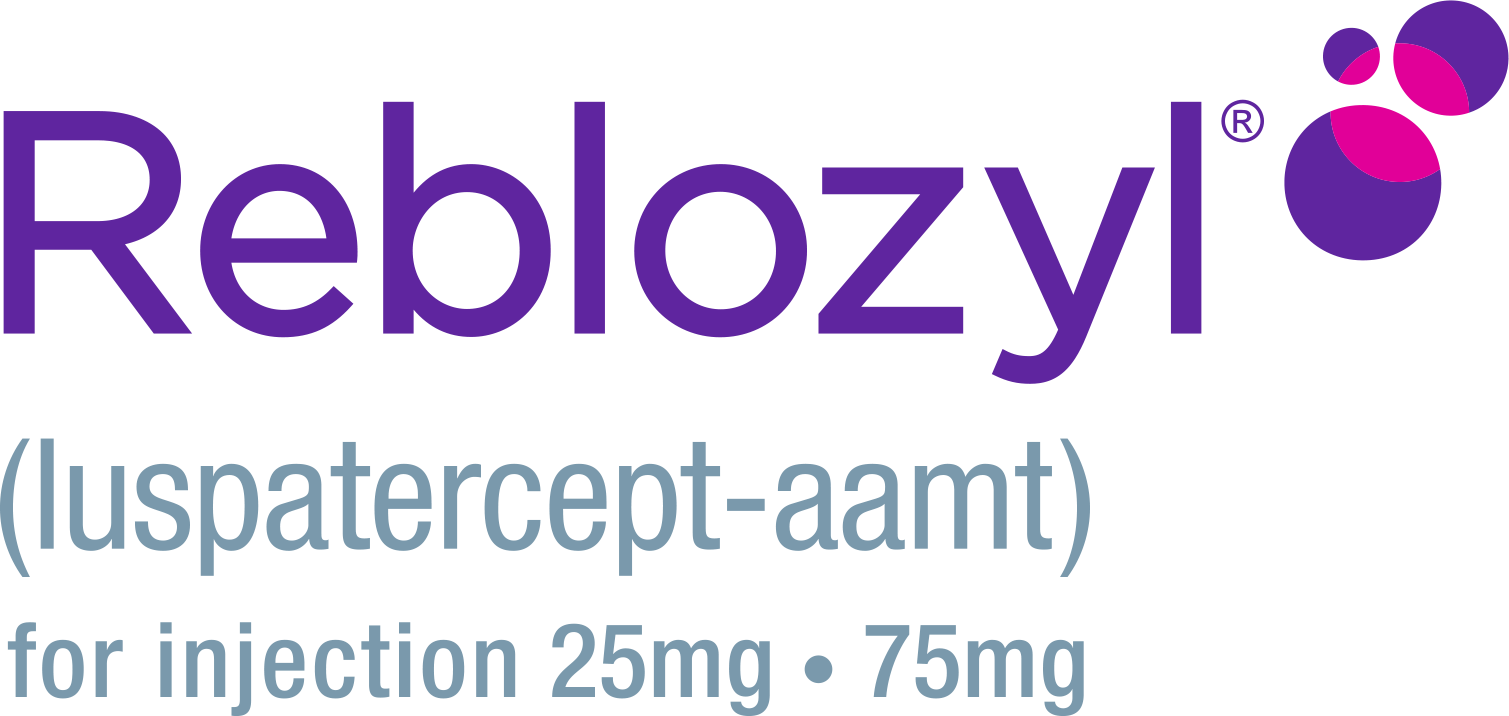REBLOZYL FOR SECOND-LINE PATIENTS WITH ANEMIA DUE TO MDS-RS
REBLOZYL limits transfusions1
Rapidly advance to REBLOZYL when ESAs fail1,2
In the MEDALIST study, the primary endpoint was RBC transfusion independence ≥8 weeks during Weeks 1-24.1
ESA=erythropoiesis-stimulating agent; MDS-RS=myelodysplastic syndromes with ring sideroblasts; RBC=red blood cell.

Achieve transfusion independence with REBLOZYL1
REBLOZYL demonstrated efficacy in patients with lower-risk MDS in the Phase 3 MEDALIST trial.

Optimize patient response through proper dosing1,3
REBLOZYL offers 3 dose levels to optimize patient response. Learn how to titrate REBLOZYL to maximize clinical benefit.

Identify the ideal patients for REBLOZYL
Initiating an early switch while transfusion burden is low may benefit your patients following ESA failure.1
References: 1. REBLOZYL [US Prescribing Information]. Summit, NJ: Celgene Corporation; 2023. 2. Data on file. Celgene Corporation. Summit, New Jersey. 3. Platzbecker U, Fenaux, P, Mufti GJ, et al. Assessment of dose-dependent response to luspatercept in patients with lower-risk myelodysplastic syndromes with ring sideroblasts in the phase 3 MEDALIST trial. Presented at: 25th Congress of the European Hematology Association [virtual]. June 12, 2020. Abstract EP812.

